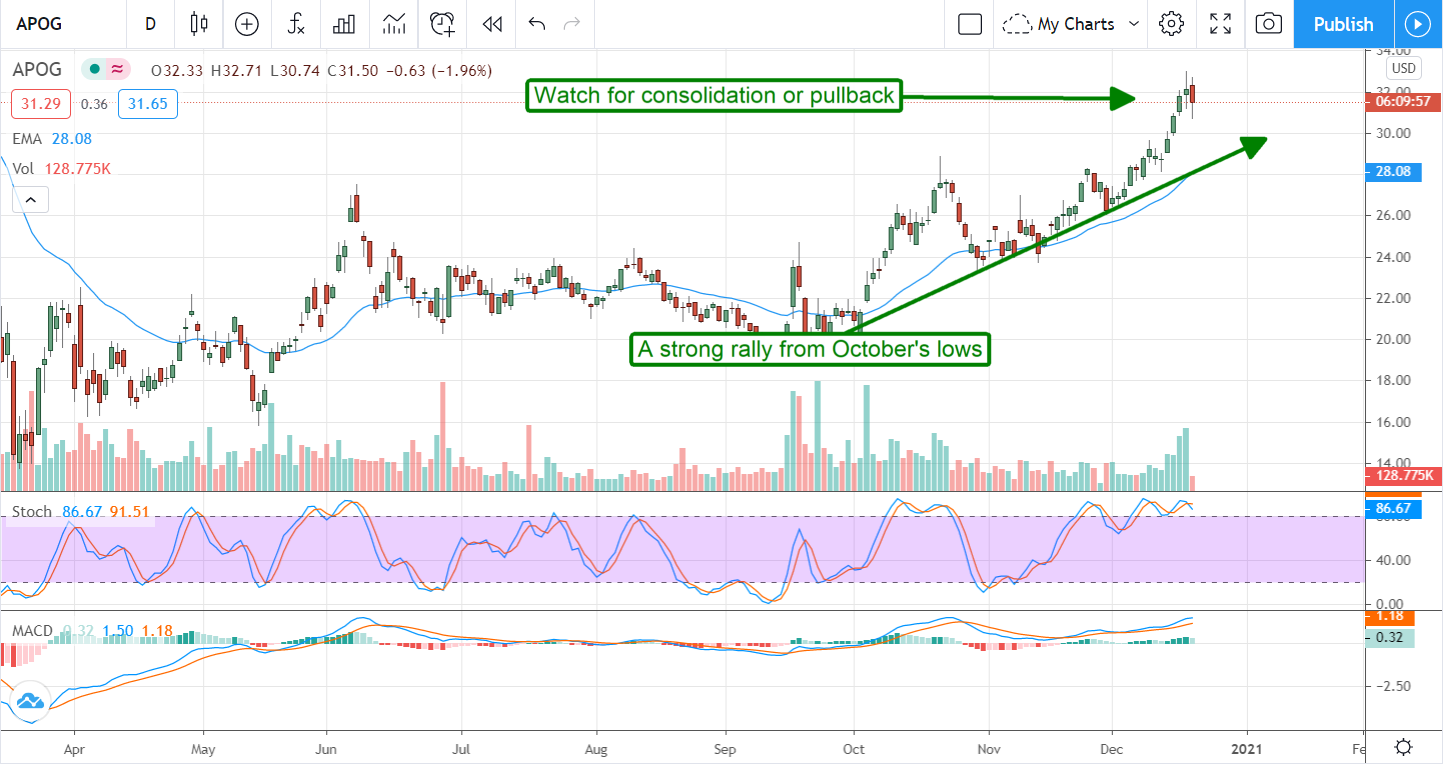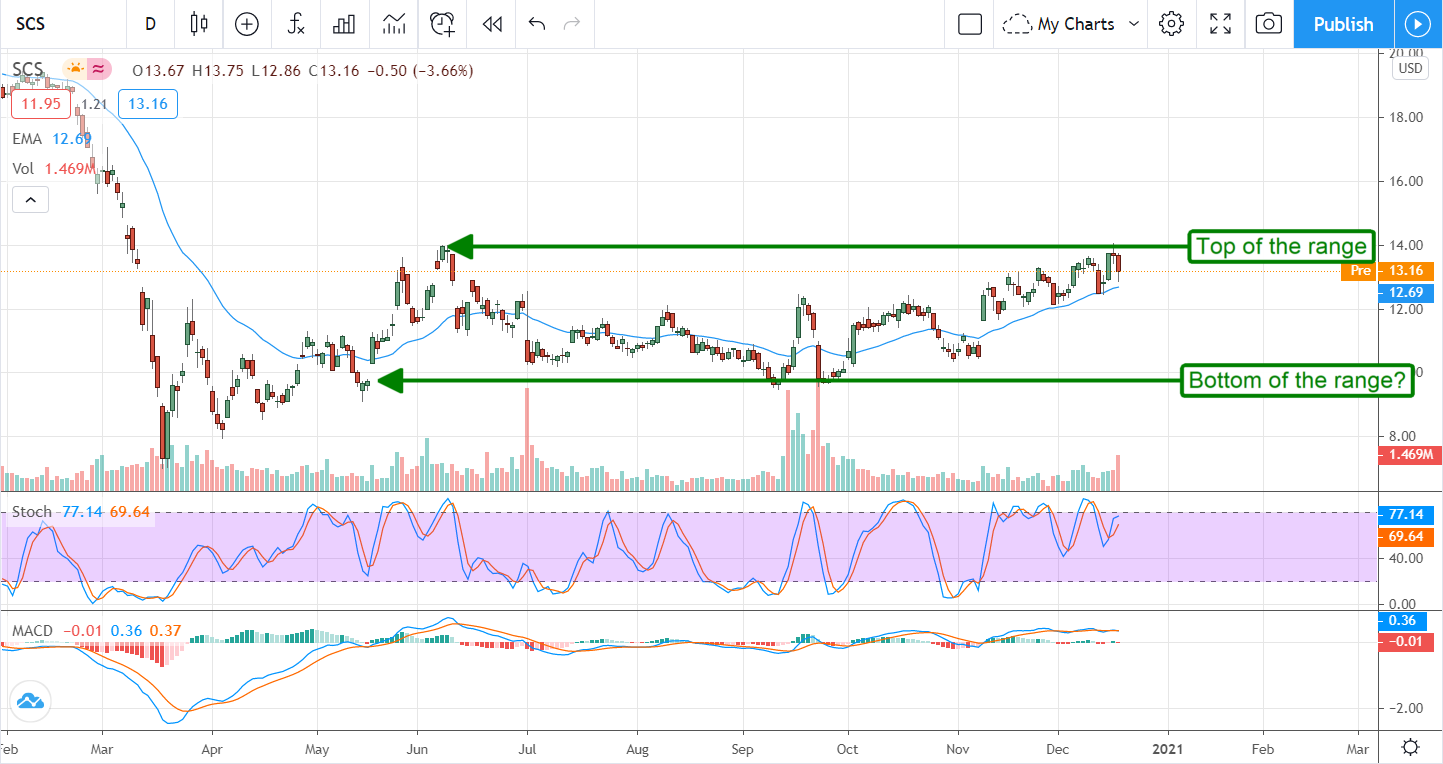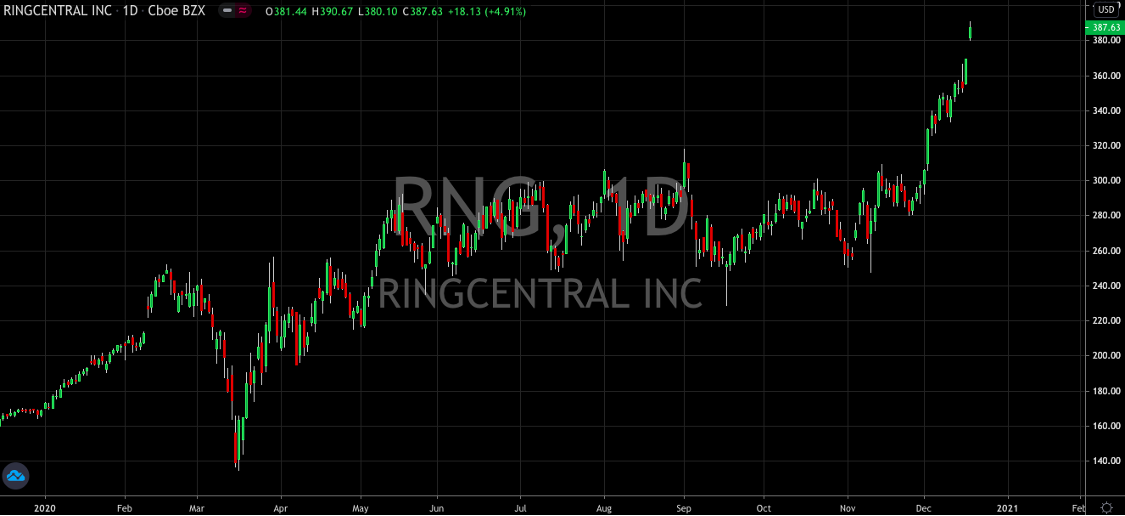 At first glance, you might think Apogee Enterprises (NASDAQ:APOG) is well-positioned as a manufacturer of windows but then again, maybe... ͏ ͏ ͏ ͏ ͏ ͏ ͏ ͏ ͏ ͏ ͏ ͏ ͏ ͏ ͏ ͏ ͏ ͏ ͏ ͏ ͏ ͏ ͏ ͏ ͏ ͏ ͏ ͏ ͏ ͏ ͏ ͏ ͏ ͏ ͏ ͏ ͏ ͏ ͏ ͏ ͏ ͏ ͏ ͏ ͏ ͏ ͏ ͏ ͏ ͏ ͏ ͏ ͏ ͏ ͏ ͏ ͏ ͏ ͏ ͏ ͏ ͏ ͏ ͏ ͏ ͏ ͏ ͏ ͏ ͏ ͏ ͏ ͏ ͏ ͏ ͏ ͏ ͏ ͏ ͏ ͏ ͏ ͏ ͏ ͏ ͏ ͏ ͏ ͏ ͏ ͏ ͏ ͏ ͏ ͏ ͏ ͏ ͏ ͏ ͏ |
| Written by Thomas Hughes Mixed Results Drives Apogee Lower Mixed Results Drives Apogee Lower
At first glance, you might think Apogee Enterprises (NASDAQ:APOG) is well-positioned as a manufacturer of windows but then again, maybe not. The company is focused almost exclusively on the industrial end of the construction business and there is some weakness in that area. Industrial furniture-maker Steelcase (NYSE:SCS) is another example of this problem. The furniture industry is rebounding strongly but Steelcase isn’t participating because the strength is all residential. But there is a difference here. Apogee operates in four segments and two are growing, and the company is in a much better position to leverage its rebound, and it pays a much-safer dividend.
“We delivered another strong quarter, with adjusted earnings growth and improved cash flow, despite continued challenges from COVID and soft conditions in our architectural end markets,” said Joseph F. Puishys, Chief Executive Officer. “We focused aggressively on managing costs and improving execution across our business and remain on track to achieve our full-year cost reduction goal of over $40 million.
Apogee Up On Mixed Results
Apogee delivered a mixed quarter in terms of revenue and earnings but there is a mitigating factor. The company missed on the top line but beat on the bottom line because of ongoing cost-savings that are driving YOY earnings increases. The topline revenue of $313.58 million is down 7.2% from last year and missed consensus by 580 basis points. The weakness is attributed to project delays and weak-end-markets related to the COVID-19 pandemic.
On a segment basis, Architectural Framing and Architectural Glass segments both saw declines on a YOY basis while Services and Large-Scale Optical both grew. The Architectural Services segment grew by double-digits (a little more than 11%) while Optical returned to growth with a 4.0% increase. Together, these segments are about 30% of net revenue.
Moving down the report, the company says it is on track to meet its goal of greater than $40 million in cost savings for the fiscal year. This can be seen in the EPS, both adjusted and GAAP, which both beat the consensus by wide margins and grew on a YOY basis. The GAAP EPS of $1.42 includes proceeds from the sale-leaseback of a property that generated a significant gain along with $24 million in cash. The more-important and comparable adjusted EPS came in at $0.91 or $0.21 better than expected and up 58% from the last year.
Apogee Has A Fortress Balance Sheet And Safe Yield
Apogee is attractive for its dividend if nothing else. The stock is yielding about 2.3% with shares near $32 and there is every expectation for distribution growth. The payout ratio is less than 30% of earnings, the balance sheet is a fortress, cash is good and free-cash-flow is growing. Based on the 9-year history of increases investors should expect another increase with the next declaration due out within the next month.
“During the quarter, we took several actions to further strengthen the company’s financial position and drive value,” continued Mr. Puishys. “We completed a sale-leaseback transaction for one of our facilities, generating a significant gain on the sale and $24 million in cash. We amended our term loan, extending the maturity by three years, and we resumed repurchases of our stock. We also initiated an effort to reduce our fixed cost base, which should add to the cost savings efforts we already had underway.”
The Technical Outlook: Apogee Is In Rally Mode
The Q3 report was taken well by the market but did not spark a major move higher. In light of the recent uptrend, the post-release pullback is welcome and may lead to consolidation at this level or a pullback to firmer support. In either case, the bulls are still in control of this stock and the outlook is optimistic if not positive. If share prices pull back it will be an opportunity to buy this stock at a deeper value and higher yield. The targets for support are near $30 and $28
  Read This Story Online Read This Story Online |  Your account is not currently signed up for MarketBeat's free Monday morning stock ideas. Our team is going to be releasing an important pick on Monday morning and we want to make sure that you are able to see it. Add your name to the distribution list here |
Written by Thomas Hughes Steelcase Not Participating In Furniture Rebound Steelcase Not Participating In Furniture Rebound
The furniture market is booming, at least on the residential end, and that is driving shares of stocks like La-Z-Boy (NYSE:LZB), Lovesac, (LOVE) and RH (NYSE:RH) to new highs. And that’s the problem for Steelcase (NYSE:SCS). Residential furniture is booming but Steelcase deals more in industrial-use furniture than anything else. Earlier in the year, over the summer, it looked like the stock was rebounding and presented a nice value-opportunity for dividend investors. Now, a quarter later, even with adjustments for one-off events, that thesis is falling apart.
To be fair, the company experienced a massive cyberattack that impacted its operations globally. The cyberattack was centered on the EMEA segments and lead to operational shutdowns and delayed deliveries of orders. Even so, the delays only account for about 6.0% of the 35.4% decline in quarterly revenue.
Mixed Results For Steelcase And Weak Outlook Drive Shares Lower
Steelcase reported a mixed quarter to be sure. The cyberattack shaved $60 million off of the top-line revenue or more than enough to make the company miss consensus estimates. Adding that back into the mix the company would have reported closer to $670 million or more than enough to beat the consensus by a wide margin. Regardless, the $617 million reported is down on a sequential basis with the YoY revenue decline accelerating. Weakness was centered in the Americas with a 40% decline in revenue. EMEA and Other segments declined by 20% and 29% respectively.
The shutdowns also contributed to a large decline in gross margins. Gross margins shrank by 430 basis points to 28.8% on deleveraging of fixed costs, higher costs related to COVID, as well as the cyberattack. Moving down to the bottom line results are a little better. The company has been working hard to control costs and mitigate the effects of COVID and that is seen in the earnings. The Q3 GAAP earnings came in at $0.02 or $0.07 better than consensus while adjusted EPS of $0.08 beat by a nickel.
Looking forward, investors should not expect much of a rebound despite optimistic comments from management. The company’s new orders fell -39% for the quarter and do not indicate a resurgence of business. The company backlog is down -15% YOY and that includes the $60 million in delayed shipments recorded in the revenue adjustments. That $60 million is worth 12% of the backlog by itself. Factoring that out of the equation the back is closer to $485 million or about 25%.
"With the early stages of vaccine deployment beginning, some customers are reactivating idled project opportunities so they will be ready to return to their offices next year," says president and CEO Jim Keane.
The Dividend Is Safe, For Now
One of Steelcase’s attractive features is the dividend. The stock yields more than 3.0% with prices near $13 and the balance is rock solid. The company has more than $462 million in cash and liquid securities with very little debt and low leverage. The cash works out to about $4.65 per share but there is a free-cash-flow issue. Free cash flow is tight and the company’s own guidance isn’t favorable in that regard. The company is expecting earnings to be near break-even in the coming quarter and that may be optimistic. With COVID still rising we’re looking at more disruption before the industrial furniture market really bounces back.
The Technical Outlook: Steelcase Falls From Resistance
Shares of Steelcase fell more than 7.0% after the 3Q release confirming resistance at the top of the trading range. The move has the shares below the short-term EMA where bears may take control of the price action. The indicators are mixed but 1) are divergent from the recent high and 2) confirm resistance at this level. In the near-term shares of Steelcase may continue to move lower with the $12 and $10 levels targets for potential support. In the long-term, this stock will likely remain range-bound until a more-positive outlook develops for the commercial market.
  Read This Story Online Read This Story Online |  Back in February, while most traders were panicking, a new algo quietly flagged a bullish signal on CPRT — right before it rebounded.
This breakthrough system, called Quant-X, doesn’t just guess. It backtests setups across hundreds of prior trades and reveals where Wall Street’s bets are stacking up. The result? Traders get the stock, the setup, and the confidence to act — all based on hard data.  Go here now to get started. Go here now to get started. |
Written by Sam Quirke As investors start to review their portfolio’s performance from the year ending and get ready for a new round in a couple of weeks, work-from-home stocks are sure to be top of mind for many. The onset of the COVID pandemic in February and March accelerated many of those companies to levels of growth previously not forecasted and their stocks understandably went parabolic. But even with a COVID vaccine starting to be rolled out, there’s still just as much opportunity to be had in 2021 if you know where to look. As investors start to review their portfolio’s performance from the year ending and get ready for a new round in a couple of weeks, work-from-home stocks are sure to be top of mind for many. The onset of the COVID pandemic in February and March accelerated many of those companies to levels of growth previously not forecasted and their stocks understandably went parabolic. But even with a COVID vaccine starting to be rolled out, there’s still just as much opportunity to be had in 2021 if you know where to look.
RingCentral (NYSE: RNG) is a cloud-based communications platform used by businesses to allow employees to make and take calls from their computers. In other words, a textbook work-from-home stock at first glance. Their shares were up 200% from the start of 2019 through March of this year so we're running with some decent momentum before Q1’s crash clipped their wings. But while they were able to undo all of the damage by May, unlike most of their peers in the work-from-home space, they didn’t really kick on from there. They topped out at around 20% higher than their pre-COVID levels and then traded sideways in a tight range through the summer and fall.
Diverging Fortunes
At the start of this month, shares were still up 75% on the year, and if that was where they tapped out for 2020, how bad. It’s not an annual return to be sniffed at all things considered but compared to competitors like Zoom Video (NASDAQ: ZM) it would have been a bitter pill to take. Zoom was the company that came to encapsulate the rally and hype seen in work-from-home stocks this year. From the start of the year through early October, shares of the San Jose based company popped more than 700%. RingCentral investors must have been kicking themselves for backing the wrong horse.
But the closer we get to the end of the year, the more it looks like RingCentral is going to finish on the stronger foot. Their shares have rallied more than 30% in the past fortnight and are crushing Zoom over the past two months. Since October, RingCentral has tacked on 40% compared to the 25% that Zoom’s have given up. That’s a considerable divergence in the fortunes of two communications software companies and investors getting ready for a new year would do well to take notice.
Only yesterday, Morgan Stanley upgraded RingCentral shares to Overweight, calling it a "pure-play leader” that was “showing top-line acceleration from partnerships ramping”. They also slapped a fresh price target of $420 onto the stock which is about 10% higher than the all-time highs it closed at last night. The previous day, Mizuho were also out with bullish comments and a price target raise.
Looking Ahead
On the flip side, Zoom is fast becoming an over hyped and bloated tech name, with a vicious price-to-earnings ratio of 280 and more downgrades of late than upgrades. JPMorgan moved them down to Neutral earlier this month as the vaccine started being delivered, citing concerns about Zoom’s ability to maintain such a high valuation in a post pandemic world. Credit Suisse went a step further earlier this month and maintained their Underperform rating on the stock which, ominously, has been in place since April.
Of the two work-from-home stocks, Zoom was the better buy for 2020. There can be no doubt about that. But it looks like it’s had its moment in the sun and if anything flew a little too close to it. RingCentral on the other hand has the appearance of a stock that’s just getting going, and I know which one I’d rather be adding to my portfolio for 2021.
  Read This Story Online Read This Story Online |  As we go deeper into the slow summer months where stocks barely move… and volatility hits peak levels…
One of the recurring questions we’re getting is: What stocks are worth trading in this season?
To give you a headstart, Roger, Kane, Lance and of course Graham and myself have revealed the stocks we’re watching for summer. I shared the full details behind the Income Machine for the first time ever! |
| More Stories |
|
|

